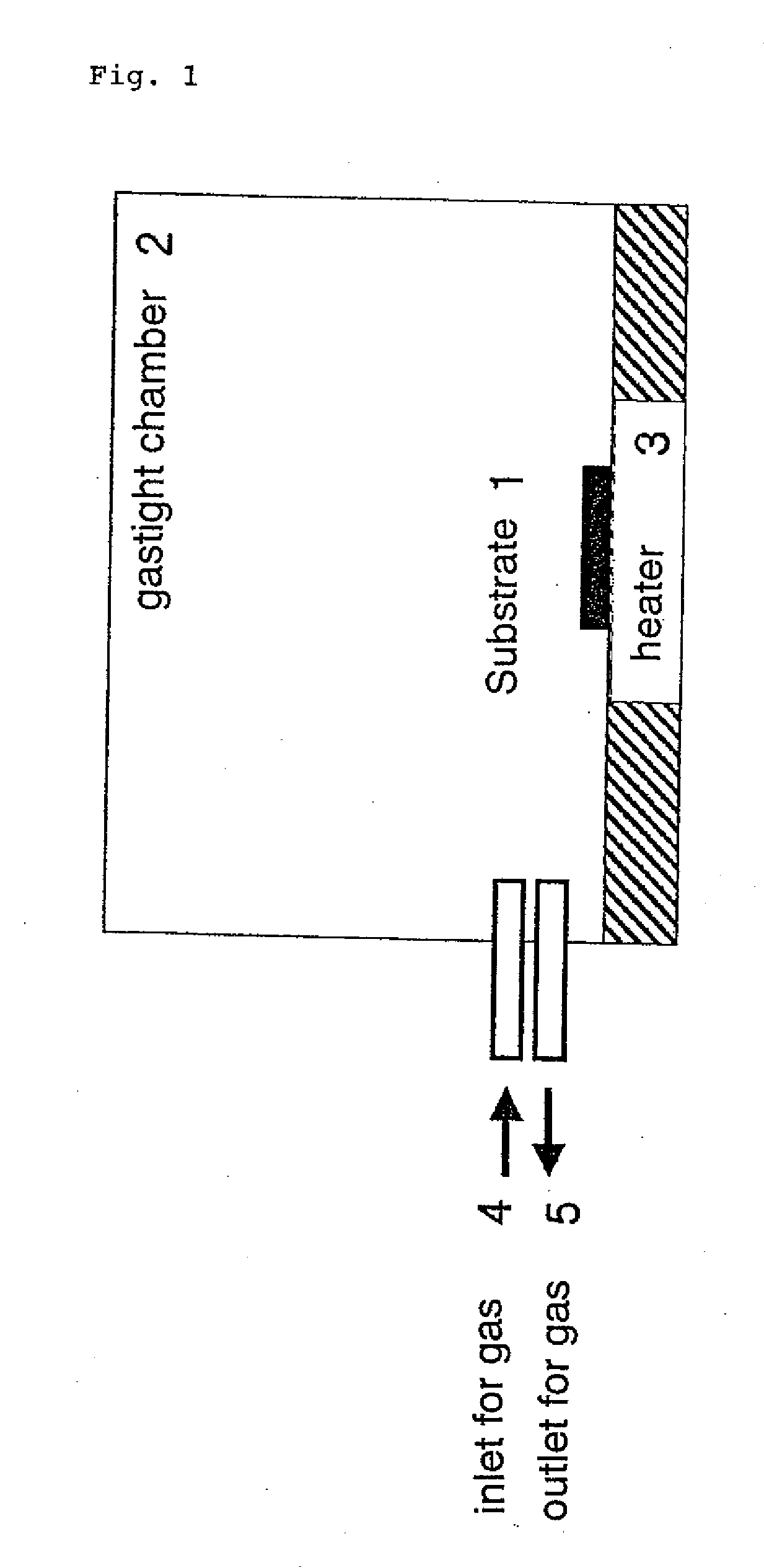Fine metal particles and fine metal oxide particles in dry powder form, and use thereof
a technology of fine metal oxide particles and dry powder, which is applied in the direction of non-metal conductors, conductors, conductive pattern formation, etc., can solve the problems of electromigration-related disconnection, and achieve the effect of low resistance and high reliability
- Summary
- Abstract
- Description
- Claims
- Application Information
AI Technical Summary
Benefits of technology
Problems solved by technology
Method used
Image
Examples
example 1
[0225] Fine silver particles in the form of a dry powder were prepared from a fine silver particle dispersion by the following procedure.
[0226] As a raw material for fine silver particles, a commercially available ultrafine silver particle dispersion (product name: Independently Dispersed Ultrafine Particle Ag1T available from Vacuum Metallurgical Co., Ltd), specifically, a dispersion of fine silver particles having an average particle size of 3 nm containing 35 parts by mass of ultrafine silver particles, 7 parts by mass of dodecylamine (molecular weight 185.36, boiling point 248° C.) as alkylamine and 58 parts by mass of toluene as an organic solvent was used.
[0227] 500 g of the ultrafine silver particle dispersion Ag1T (containing 35 wt % of Ag) and 87.5 g (50 wt % based on solid content of Ag) of dibutylaminopropylamine (boiling point 238° C., available from KOEI CHEMICAL CO., LTD.) were put and mixed in a 1 L round bottom flask, and the mixture was heated with stirring at 80?...
example 2
[0230] Fine gold particles in the form of a dry powder were prepared from a fine gold particle dispersion by the following procedure.
[0231] As a raw material for fine gold particles, commercially available ultrafine gold particle dispersion (product name: Independently Dispersed Ultrafine Particles Au1T available from Vacuum Metallurgical Co., Ltd), specifically, a dispersion of fine gold particles having an average particle size of 5 nm containing 30 parts by mass of ultrafine gold particles, 7 parts by mass of dodecylamine (molecular weight 185.36, boiling point 248° C.) as alkylamine and 63 parts by mass of toluene as an organic solvent was used.
[0232] 300 g of the ultrafine gold particle dispersion Au1T (containing 30 wt % of Au) and 45 g (50 wt % based on solid content of Au) of 2-ethylhexylamine (boiling point 169° C., available from KOEI CHEMICAL CO., LTD.) were put and mixed in a 1 L round bottom flask, and the mixture was heated with stirring at 80° C. for 1 hour. After c...
example 3
[0236] Fine copper oxide particles in the form of a dry powder were prepared from a dispersion of fine copper particles in the form of fine copper oxide particles by the following procedure.
[0237] As a raw material for fine copper particles, commercially available ultrafine copper particle dispersion (product name: Independently Dispersed Ultrafine Particles Cu1T available from Vacuum Metallurgical Co., Ltd), specifically, a dispersion of fine copper particles having an average particle size of 5 nm containing 30 parts by mass of ultrafine copper particles, 7 parts by mass of dodecylamine (molecular weight 185.36, boiling point 248° C.) as alkylamine and 63 parts by mass of toluene as an organic solvent was used. The fine copper particles are in the form of fine copper oxide particles having an oxide film on the surface.
[0238] 1000 g of the ultrafine copper particle dispersion Cu1T (containing 30 wt % of Cu) and 150.0 g (50 wt % based on solid content of Cu) of 2-ethylhexylamine (...
PUM
| Property | Measurement | Unit |
|---|---|---|
| particle size | aaaaa | aaaaa |
| temperature | aaaaa | aaaaa |
| boiling point | aaaaa | aaaaa |
Abstract
Description
Claims
Application Information
 Login to View More
Login to View More - R&D
- Intellectual Property
- Life Sciences
- Materials
- Tech Scout
- Unparalleled Data Quality
- Higher Quality Content
- 60% Fewer Hallucinations
Browse by: Latest US Patents, China's latest patents, Technical Efficacy Thesaurus, Application Domain, Technology Topic, Popular Technical Reports.
© 2025 PatSnap. All rights reserved.Legal|Privacy policy|Modern Slavery Act Transparency Statement|Sitemap|About US| Contact US: help@patsnap.com


